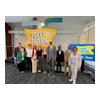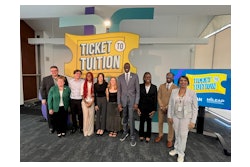 Katrina Rogers
Katrina RogersIn 2009, citing statistics that showed the United States ranking 12th in the world in degree attainment, President Obama charged American colleges and universities to produce eight million more graduates by 2020.
This is a legitimate and, indeed, essential goal. However, we believe that it cannot be met with a continuation of academic policies and pedagogies that have been largely unchanged for many generations. Faculty and administrators at institutions of all types, from community colleges to research universities, need to advance pedagogies that focus on students’ demonstration of learning, both inside and outside of classrooms. Competency-based education or competency-based learning (CBL) connotes the primacy of the learning process, which is vital in securing the economies and effectiveness that are increasingly demanded of higher education.
CBL models have been advanced by the U.S. Department of Education and several prominent foundations in recent months as a strategy for making college more accessible and affordable for students. Unfortunately, historically Black colleges and universities (HBCUs) and tribal colleges and universities (TCUs) have been largely absent from participation in the several initiatives that have been initiated to advance CBL, even though these institutions graduate close to 25 percent of all African-Americans and 20 percent of all Native Americans, respectively, that complete baccalaureate degrees in the United States. Moreover, current projections suggest that students from these two groups (along with Latinos and Asian Americans) will comprise the majority of American college students sometime in the next decade.
Thus, if CBL is indeed a potential game-changing pedagogical strategy for higher education, it is essential for HBCUs, TCUs and other minority-serving institutions (MSIs) to be a part of the planning and implementation of such strategies since these institutions are likely to be major producers of the national workforce of the future. These outcome-based strategies offer an essential alternative to the way learning is measured, provide students with personalized learning opportunities and ― importantly ― once and for all overcome the tyranny of the long-obsolete credit hour.
CBL models increasingly rely on other time-tested approaches to measuring learning that are not classroom based, such as prior learning assessment (PLA) and its cousin, direct assessment (DA). All of these, together, encourage adults to return to college or enter college for the first time by providing a mechanism to validate what they have learned from experiences outside of college classrooms. They are also attractive to historically underrepresented groups by giving value to what a learner already has mastered, avoiding the waste of time and money that comes from relearning the same things in a formal classroom. Moreover, PLA and DA can validate other ways of knowing — as well as traditional knowledge — that might have been acquired within the context of diverse cultures and communities. For example, traditional knowledge acquired by Native American students about the environment or health care might become more easily validated for college credit in a CBL environment.
CBL, PLA and DA are not new. These models originated in the late 1960s, and have been consistently ― and successfully ― offered by a handful of institutions, such as our own Fielding Graduate University. The pivotal Higher Education Act of 1965, while opening the door to higher education for tens of millions of Americans, enshrined in statute the credit hour as the only recognized measure of learning, and therefore, access to federal grants and loans.
There was a breakthrough of sorts in the 2006 amendments to the Higher Education Act, which opened the door to CBL by expanding the definition: “ … An instructional program that, in lieu of credit hours or clock hours as the measure of student learning, utilizes direct assessment of student learning, or recognizes the direct assessment of student learning by others.”
Programs, however, still must revert to a credit-hour equivalency for student aid to be awarded. Fortunately, the absurdity of this barrier to effective learning is beginning to be recognized. Congress has before it proposals that would accommodate CBL, and Sen. Lamar Alexander, R-Tenn., chairman of the Senate Health, Education, Labor, and Pensions (HELP) Committee, has announced his strong support for such a reform.
Importantly, the Lumina Foundation, which has become a major catalyst for positive change, now funds CBE-N, an institutional network of CBL innovators, and Department of Education has authorized over 40 institutions to experiment with differing models through approving alternative ways to award federal financial aid to students.
 Mike Goldstein
Mike GoldsteinAll of the issues above pose significant challenges ― and opportunities ― for minority-serving institutions as we begin, as a sector, to grasp the long-term implications of CBL.
Katrina S. Rogers is president of Fielding Graduate University. Mike Goldstein is co-chair of higher education practice at Cooley LLP and the former board chair of Fielding Graduate University.


















